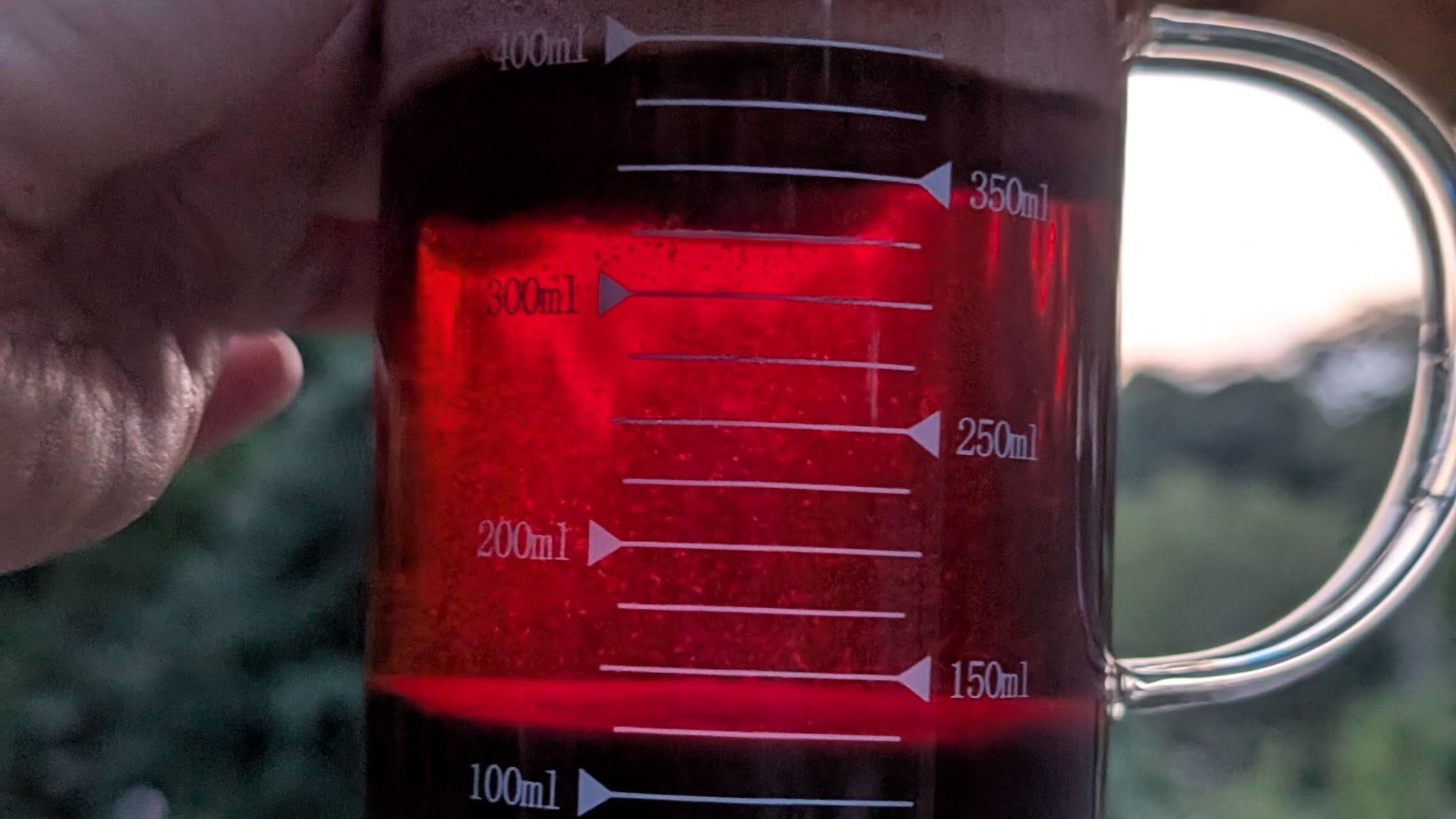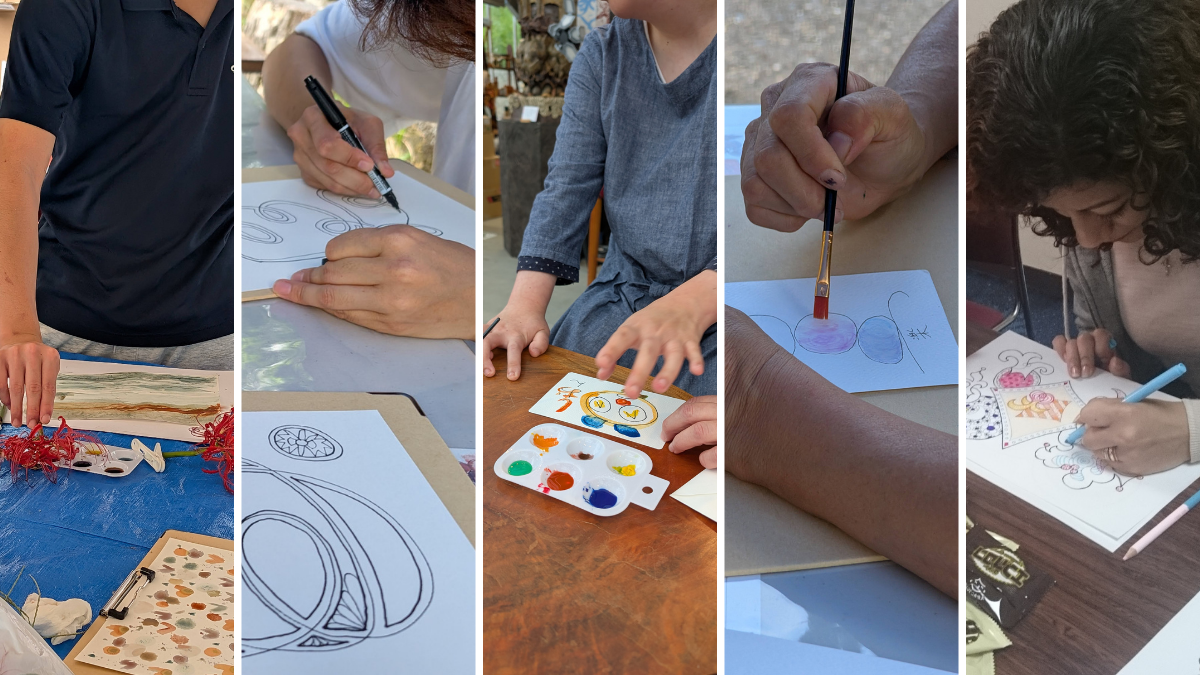This week has been a unexpected color adventure from one weedy plant – ramie.
Ramie is a fiber plant called karamushi in Japanese and also called “false nettle” in English. (It’s in a completely different botanical family than the stinging nettles that produce linen.) Ramie’s been grown for 6000 years in Asia. It makes smooth fabric and is also used to make pure white tassels for Buddhist ceremonies.
I suspect ramie was once cultivated at 555 by the Kawasakis but it’s gone wild and grows all over the property now as a rangy weed. When tended properly it grows straight and tall, producing meter long bast fibers that separate like ribbons from the stem.

That is not what mine look like. Ramie here has brownish stems that branch and bend. Imperfect for making long strands to spin into thread but it should work fine for paper, where the fibers would be turned into pulp. Ramie would be my first trial of plant-to-paper fully from my own hands.
So I gathered some stalks that were growing in the west garden, peeled them back and ended up with a mess of fiber mixed with bits of soft bark. It didn’t look like the flat green ribbons I’d admired in videos about cultivated ramie, but for a first try with weedy plants, it was successful enough.


And then it went off the rails from papermaking into color making. I cooked the fiber in an alkaline solution (20% WOF sodium carbonate) as directed in Helen Hiebert’s excellent book, and the bark turned the water red! What a surprise.
So I went with it. Saved the liquid from the cooked fibers and added alum to precipitate the color. Usually I add alkali to acidic dye water, but it works the other way, too. I had so much colored water that I was able to try two different techniques: one beaker with just alum and the other with alum and chalk.

By the next morning, the precipitate had settled so I poured it off and made paints: my usual watercolor base and also a gouache. I dried the chalky precipitate to make my first pastel sticks.


So that was the pinky red I got from ramie. It’s a lovely color.
Is ramie a well-known source of dye? It’s not mentioned in western color-making. I dug into my Japanese dye color reference books to see what I’d find, but didn’t see ramie in them.
I searched online and also asked Claude, who cheered me on for discovering a new source of color. Claude is dumb. 6000 years of the plant means someone knows about it creating red.
A trip to the Kamogawa pubic library filled me in. I sat on the floor in front of the 753 section and feasted on information. Hooray for books!!

bohemia tricuspis

bohemia nivea

bohemia grandiflora
The Illustrated Book of Dye Plants by Sieji Yamazaki showed me three different versions of bohemia and they all produce warm colors. Suck it, Claude. I did not discover this.
I also learned a lot of different names for these plants: Karamushi, Choma, variations on Mao and Akaso. Every source seems to disagree! There is so much to learn but the key thing to learn is what it’s called here and how people use it. That’s the springboard that really matters.
Red is not the only color that ramie produced. I extracted green from the leaves – but not the usual way. I’ll write it up after a few more experiments to confirm my hypothesis.






